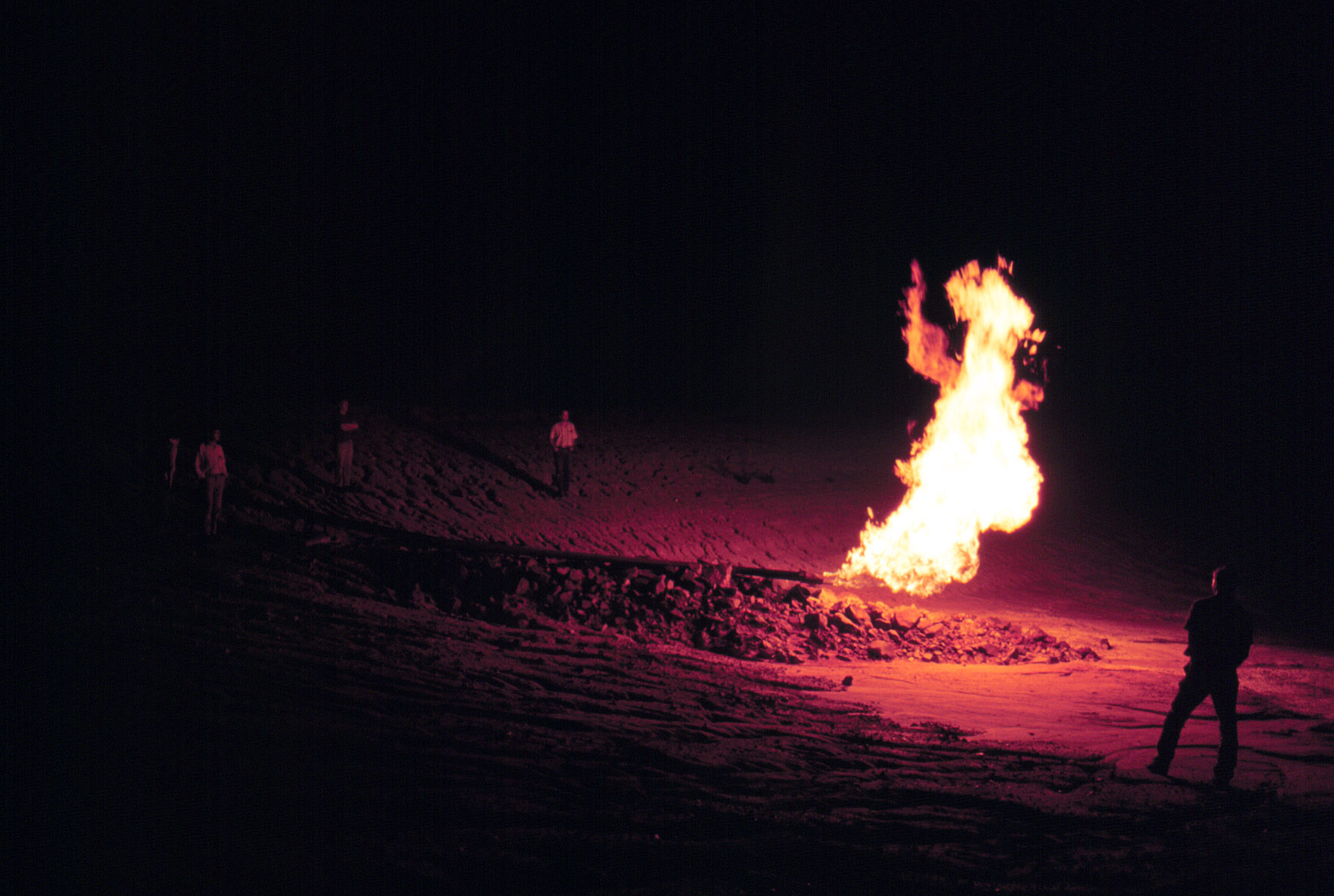
PETROLEUM GEOLOGY
We feature research and graduate education in petroleum geology. We bring the tools of structural geology, sedimentology, stratigraphy, and micropaleontology to the study of petroleum accumulation. A variety of petroleum-related courses are taught regularly.
In our unique Schramm course in Economic and Exploration Geology, experts from industry, consulting, and academia are brought in to provide cutting edge knowledge in petroleum geology.
STRUCTURAL GEOLOGY
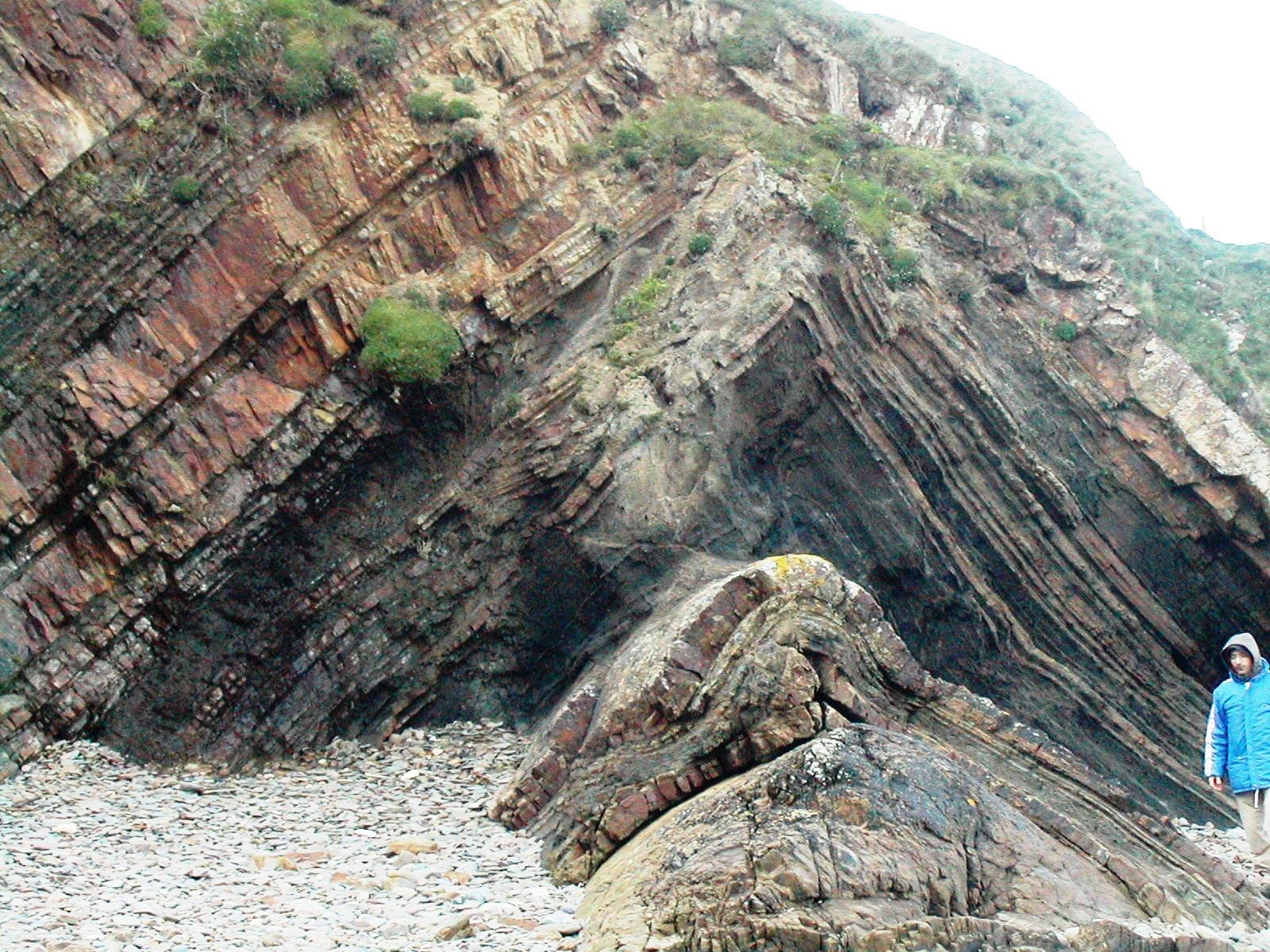
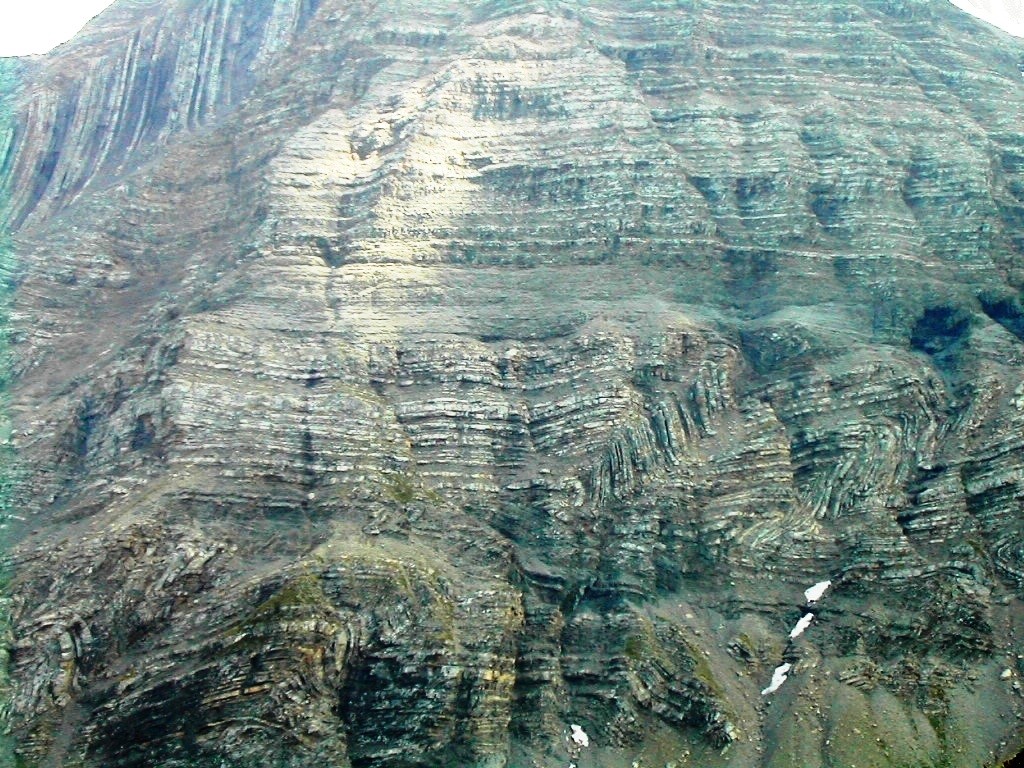
Structural Geology & Tectonics
Cara Burberry looks at the tectonic development and petroleum potential of fold belts and foreland basins worldwide, using remote sensing, analog modeling, fieldwork and seismic interpretation. Other areas of interest include the construction of balanced cross-sections through deformed regions and the prediction of fracture networks in reservoir units. Current research focuses on understanding the effect of early or basement faulting on subsequent deformational events within a foreland basin system.
SEDIMENTARY SYSTEMS

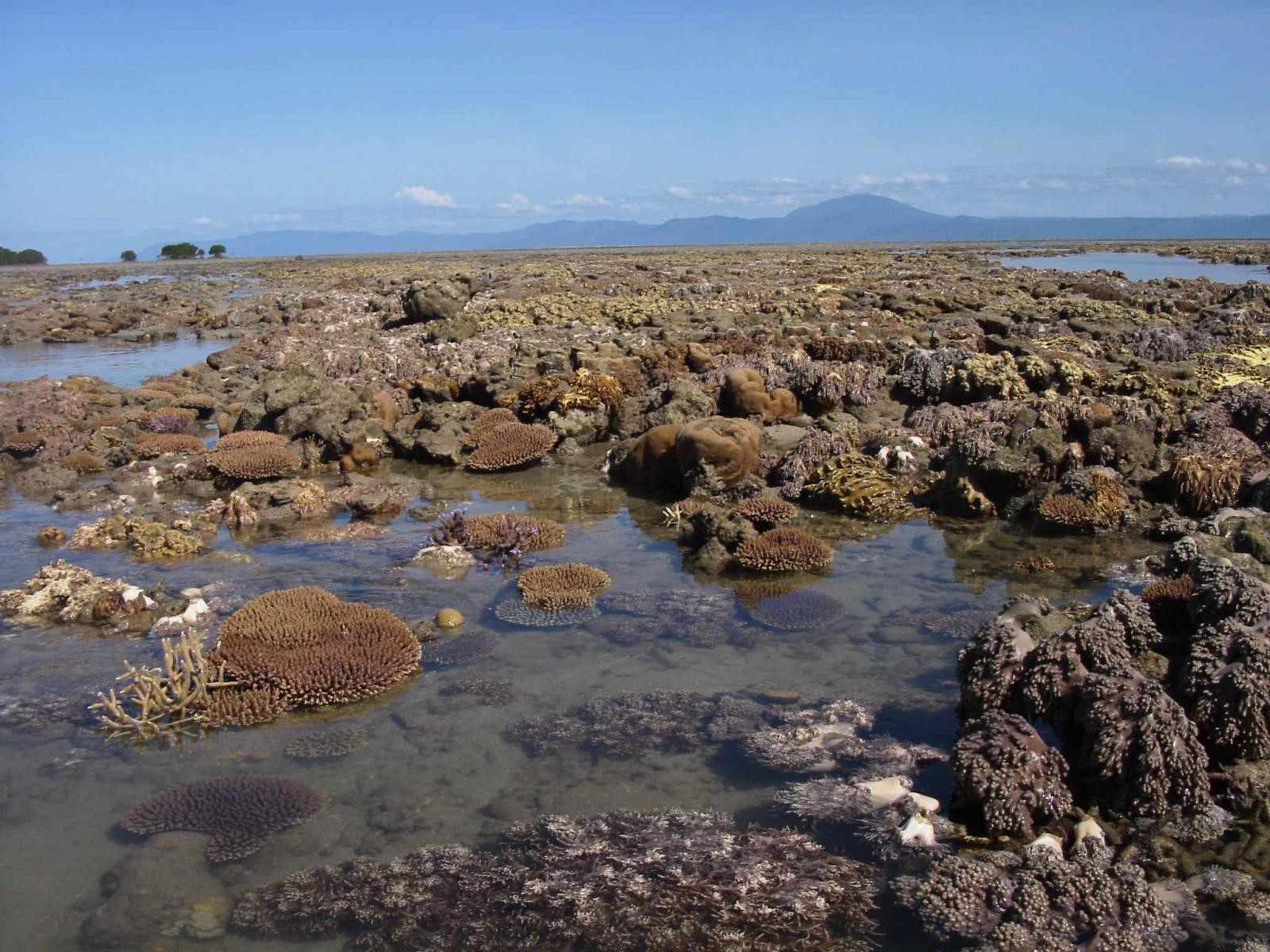
Clastic Sedimentology & Stratigraphy
Chris Fielding and his students examine stratigraphic stacking patterns in modern and ancient glacial, fluvial, coastal plain and shallow marine successions in order to improve understanding of subsurface reservoir geometry and flow properties, and other petroleum system characteristics. The Fielding lab is currently undertaking field-based studies in Wyoming, Utah, Nebraska, Atlantic Canada, eastern Australia, and Antarctica.
Carbonate sedimentology, geochemistry, and diagenesis
Tracy Frank and her students examine the sedimentology, petrography, and isotope geochemistry of marine carbonates to examine past changes in climate, the oceans, and depositional environments. Projects combine field and laboratory work. The Frank lab is currently undertaking field-based studies in the central and southwest USA, Australia, and Antarctica. These efforts are complemented by studies of drillcores obtained by he Integrated Ocean Drilling Program, ANDRILL, and petroleum companies
MICROPALEONTOLOGY
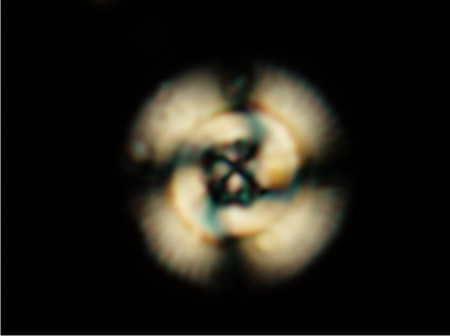
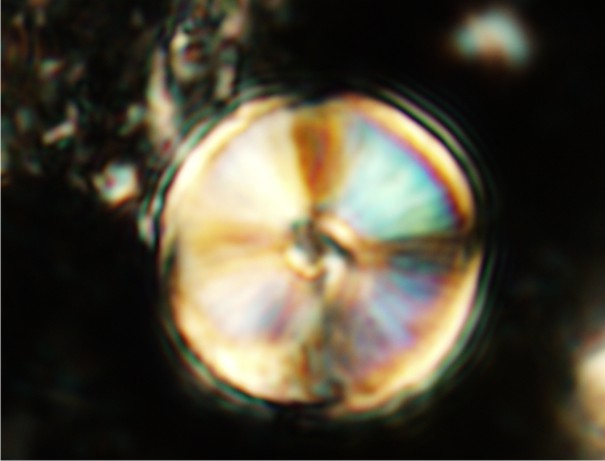
Calcareous nannoplankton biostratigraphy
David Watkins and his students use calcareous nannofossils (coccoliths) from marine sediments to examine questions of evolution, biostratigraphy, and paleoceanography during the Mesozoic and Cenozoic. The Watkins Lab has on-going work on quantitative biostratigraphy of Cenozoic sequences in the Gulf of Mexico and the Pyrenees, and the Upper Cretaceous of the Western Interior Basin (USA), as well as Late Cretaceous paleoceanography from the Atlantic.
GEOPHYSICS
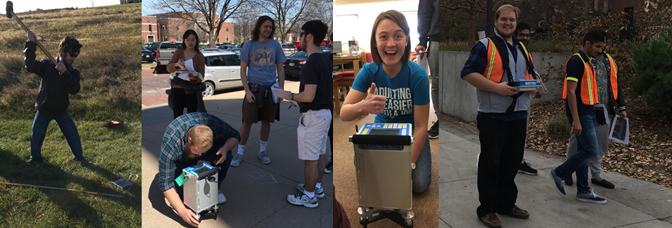
Irina Filina and her students utilize the integrative approach in geophysical data analysis. They seek the answer (i.e. geological model of the subsurface) that fits all available geophysical data while remaining geologically valid. Data include seismic, gravity and magnetics along with other available constraints such as surface geology, well logs or tectonic restorations. The Filina Lab has ongoing research focused on tectonic studey of the Gulf of Mexico and geophysical studies in Nebraska.
SPECIALTY PROGRAMS

The Schramm Course in Economic and Exploration Geology brings in experts in petroleum geology from around the world to teach advanced topics. Students also participate in field work directly related to the topics covered during the semester.
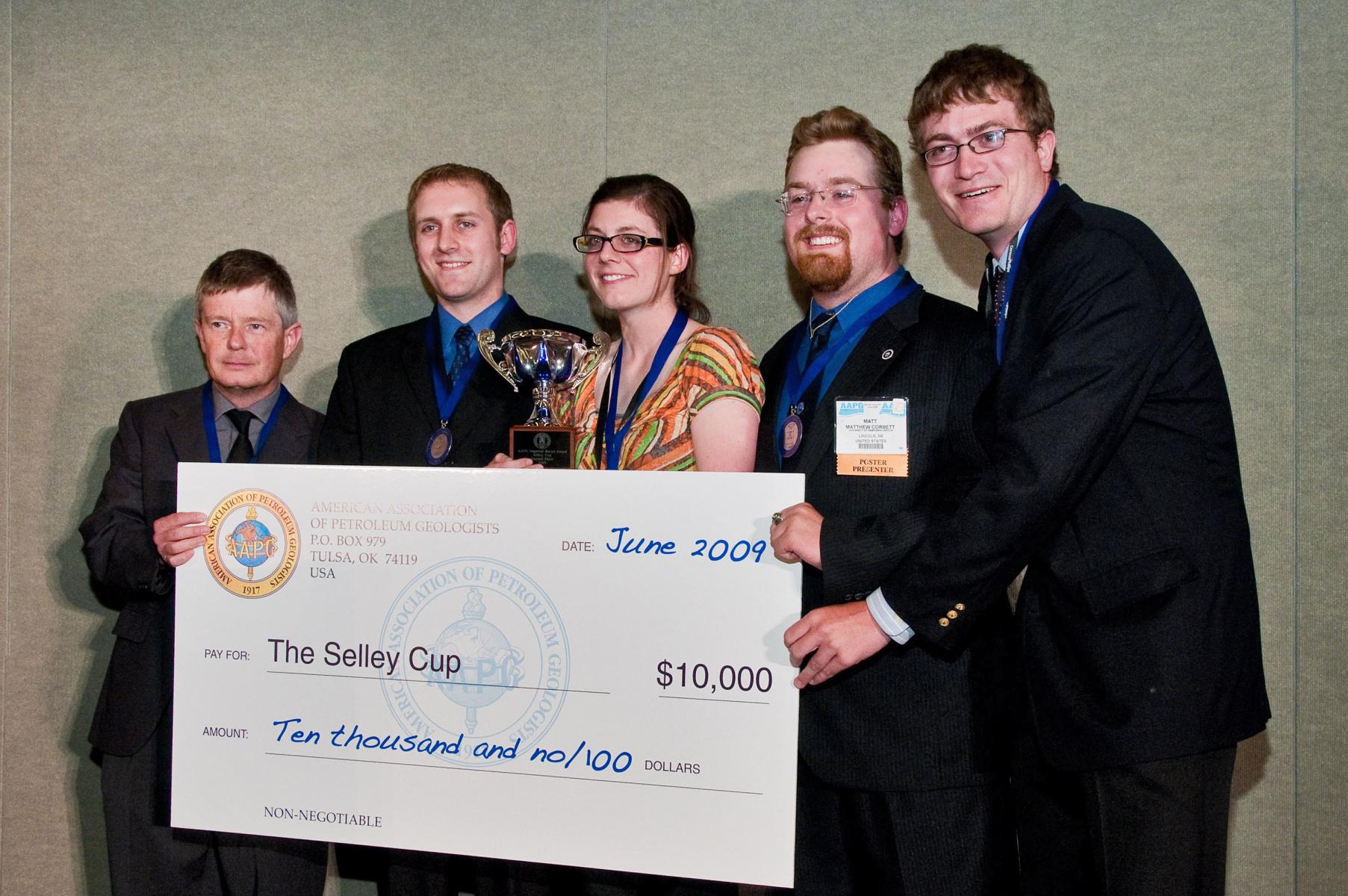
The UNL Petroleum Geology group participates in the annual AAPG Imperial Barrel Award Competition, which pits teams from universities all over the world in competition in petroleum prospect evaluation. Our most recent team was awarded the Selley Trophy in the International Competition.
GRADUATE COURSES
| 816. Isotope Geochemistry (3 cr) Kettler Behavior of stable and radiogenic isotopes in geological and cosmochemical systems. Application of isotope geochemistry to determining the age of rocks, as well as the sources of the chemical components in the rocks. |
| 817. Organic Geochemistry (3 cr) Kettler Origin, preservation, and transport of the organic compounds found in the rock record. Applications of organic geochemistry to paleoclimatic and paleoenvironmental interpretations as well as to discerning the origins of coal, oil and natural gas. |
| 821. Carbonate Petrology (3 cr) Frank Depositional settings and processes, petrography, geochemistry, diagenesis and geological significance of modern and ancient carbonate rocks and sediments. |
| 828. Stratigraphic Architecture and Sequence Stratigraphy (3 cr) Fielding Analysis of stratigraphic stacking patterns in sedimentary basins and sequence stratigraphic methods. |
| 830. Quantitative Methods in Paleontology (3 cr) Watkins Numerical and statistical analysis of paleontological data including biometry, synecology and quantitative biostratigraphy. |
| 831. Micropaleontology (3 cr) Harwood Morphology, classification, ecology, and geological application of common fossil and extant marine, brackish, and freshwater microfossils. |
| 845. Advanced Geophysics (3 cr) Filina Integrative analysis of geophysical data (gravity, magnetics, seismic) with geological information (well logs, tectonic history, etc.) |
| 885. Fossil Fuel Geology and Exploration (3 cr) Fielding Geology of coal, oil and gas, and methods of exploration for those resources. |
| 846. Exploration Geophysics (3 cr) Filina Geophysical methods used for petroleum exploration: potential fields, seismology, electrical and electomagnetic surveying. |
| 895. Economic and Exploration Geology (2 cr, max 6). Recommended parallel: a GEOL course as indicated by the instructor and to vary with course content. Content will vary on a 3-year rotation. Combined lectures, seminars, weekend short courses, and field trips. Field trips are required and supported by alumni endowment. Field trips may be scheduled during semester breaks. |
| 898. Basin Analysis (3 cr) Filina Principles and application to petroleum play assessment |
| 921. Sedimentary Petrography and Diagenesis (3 cr) Frank Study of sedimentray rocks under the microscope, including origin, composition, texture, and diagenesis. |
| 926. Marine Geology and Paleoceanography (3 cr) Frank Geology of the oceanic realm, formation of oceanic crust, circulation, geochemistry, pelagic sediments and their diagensis, correlation, and oceanic history. |
| 929. Mesozoic and Cenozoic Stratigraphy (3 cr) Application of stratigraphic principles and methods to the solution of Mesozoic and Cenozoic problems. |
| 940: Advanced Structural Geology (3 cr) Burberry Geo-mechanical and structural concepts; techniques and concepts necessary in hydrocarbon exploration. |
| 936. Siliceous Phytoplankton Paleontology (4 cr) Harwood Biostratigraphy, paleoecology, and paleobiogeography of fossil diatoms, silicoflagellates and ebridians. |
| 937. Mesozoic Calcareous Nannofossil Paleontology (4 cr) Watkins Biostratigraphy, paleoecology, and paleobiogeography of Mesozoic calcareous nannofossils. |
| 938. Cenozoic Calcareous Microfossil Paleontology (4 cr) Lec 3, lab 3. Biostratigraphy, paleoecology, and paleobiogeography of Cenozoic calcareous nannofossils. |